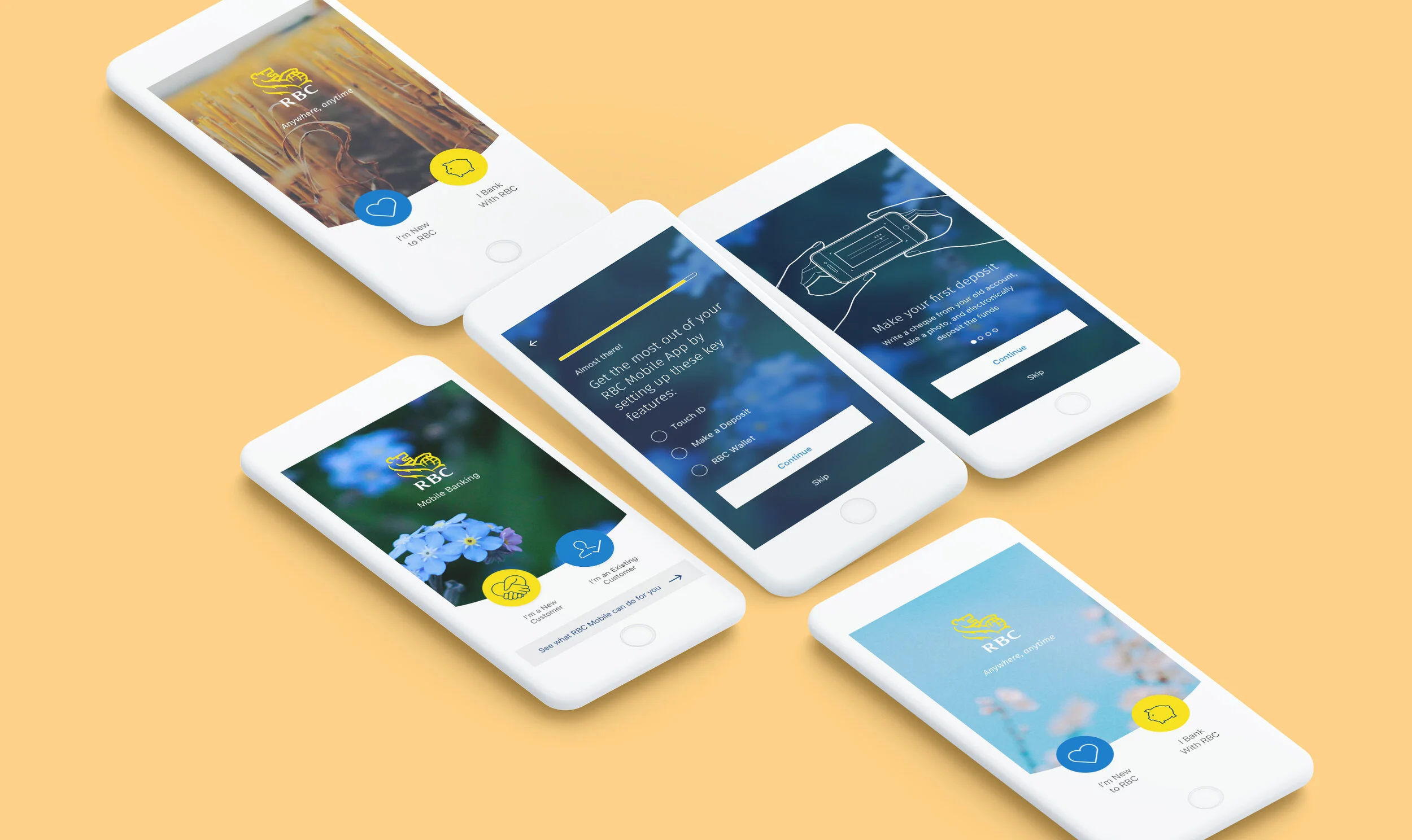
Sept 2017 - Sept 2018
Mobile 2.0
People’s expectations for mobile apps are constantly changing and RBC wanted to evolve the mobile banking channel into a fluid and relevant experience for new & existing clients. It was also quickly becoming the leading channel for clients to do their banking and so, there was a need to design a solid foundation that would sustain future products.
When I joined Mobile, the team was small and the design process was non-existent. Designers worked in silos from product & development. We were not working with product to develop strategy and there was not a consistent component library for both our iOS & Android platforms. It was chaos.
It was an interesting challenge to be part of a team that transformed that chaos into a proper design process with product and a design system with development. I had the opportunity to lead the creative visual direction while strengthening our relationships with developers.

My Key Contributions
🎨 Provided concepts and inspiration that have been carried out in its final stages.
🎬 Advocated for creative interactions that made content engaging. Introduced Principle to the team as a way to communicate motion and interaction design to developers.
🔎 Set up user test plans and analyzed results to inform and validate design decisions.
⚒ Worked closely with designers and developers to build the first ever design system, which ensured consistency across design and development.
📽 Illustrated and participated in animating onboarding videos in Adobe After Effects.
Onboarding
On-boarding was a tailored experience that considered whether a client was new to RBC, to the mobile app or to a new feature. Concise animated tutorials were provided to give clients just enough context on what’s new.
Global help
Clients can communicate with RBC from anywhere within the app. This area would be the hub where clients can access further touch points with RBC
Visual alignment
To ensure consistency across iOS & Android applications, a design system was created to standardized reusable components that would act as building blocks for use in both applications. The system can be leveraged by designers and developers to create efficiencies in design flows and in code.



